| Please use a modern browser to view this website. Some elements might not work as expected when using Internet Explorer. - Landing Page
- Luxury Yacht Vacation Types
- Corporate Yacht Charter
- Tailor Made Vacations
- Luxury Exploration Vacations
- View All 3704
- Motor Yachts
- Sailing Yachts
- Classic Yachts
- Catamaran Yachts
- Filter By Destination
- More Filters
- Latest Reviews
- Charter Special Offers
- Destination Guides
- Inspiration & Features
- Mediterranean Charter Yachts
- France Charter Yachts
- Italy Charter Yachts
- Croatia Charter Yachts
- Greece Charter Yachts
- Turkey Charter Yachts
- Bahamas Charter Yachts
- Caribbean Charter Yachts
- Australia Charter Yachts
- Thailand Charter Yachts
- Dubai Charter Yachts
- Destination News
- New To Fleet
- Charter Fleet Updates
- Special Offers
- Industry News
- Yacht Shows
- Corporate Charter
- Finding a Yacht Broker
- Charter Preferences
- Questions & Answers
- Add my yacht
SKAT yacht NOT for charter*70.7m / 231'11 | lurssen | 2002 / 2022. Special Features: - Guest elevator
- Impressive 4,600nm range
- Recent refit in 2022
- Lloyds Register ✠ 100A1, SSC Yacht (P) Mono, G6, , ✠ LMC , UMS classification
- Award winning
The award winning 70.7m/231'11" motor yacht 'Skat' was built by Lurssen in Germany at their Bremen shipyard. Her interior is styled by design house Marco Zanini and she was completed in 2002. This luxury vessel's exterior design is the work of Espen Oeino and she was last refitted in 2022. Guest AccommodationSkat has been designed to comfortably accommodate up to 12 guests in 6 suites. Additionally, there are 2 staff cabins aboard. She is also capable of carrying up to 18 crew onboard to ensure a relaxed luxury yacht experience. Onboard Comfort & EntertainmentHer features include an elevator, beach club, gym and air conditioning. Range & PerformanceSkat is built with a steel hull and aluminium superstructure, with teak decks. Powered by twin diesel MTU (16V 4000 M70) 16-cylinder 2,682hp engines running at 2000rpm, she comfortably cruises at 15 knots, reaches a maximum speed of 18 knots with a range of up to 4,600 nautical miles from her 224,000 litre fuel tanks at 14 knots. An advanced stabilisation system on board promises exceptional comfort levels at anchor or on any voyage. Her water tanks store around 62,000 Litres of fresh water. She was built to Lloyds Register ✠ 100A1, SSC Yacht (P) Mono, G6, , ✠ LMC , UMS classification society rules. | Length | 70.7m / 231'11 | | Beam | 14.02m / 46' | | Draft | 3.76m / 12'4 | | Gross Tonnage | 1,998 GT | | Cruising Speed | 15 Knots | | Built | | (Refitted) | | Builder | Lurssen | | Model | Custom | | Exterior Designer | Espen Oeino | | Interior Design | Marco Zanini | *Charter Skat Motor YachtMotor yacht Skat is currently not believed to be available for private Charter. To view similar yachts for charter , or contact your Yacht Charter Broker for information about renting a luxury charter yacht. Skat Yacht Owner, Captain or marketing company 'Yacht Charter Fleet' is a free information service, if your yacht is available for charter please contact us with details and photos and we will update our records. Skat Photos 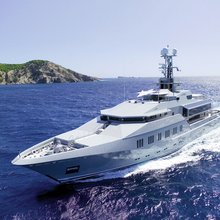 Skat Awards & Nominations - International Superyacht Society Awards 2003 Best Power 43m+ Winner
NOTE to U.S. Customs & Border Protection SIMILAR LUXURY YACHTS FOR CHARTERHere are a selection of superyachts which are similar to Skat yacht which are believed to be available for charter. To view all similar luxury charter yachts click on the button below. 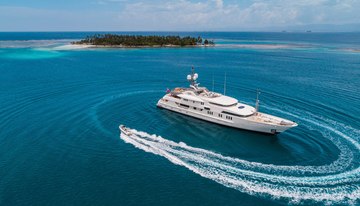 62m | Amels from $345,000 p/week 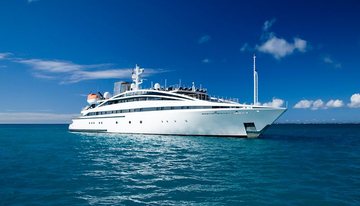 Elegant 00772m | Lamda Nafs Shipyards from $563,000 p/week ♦︎ 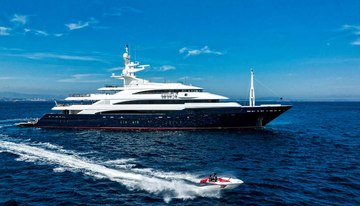 80m | Oceanco from $861,000 p/week ♦︎  66m | Oceanco from $556,000 p/week ♦︎ 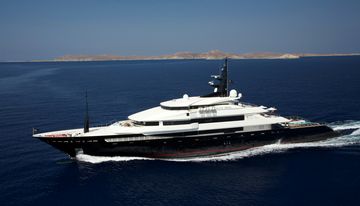 81m | Oceanco from $812,500 p/week * 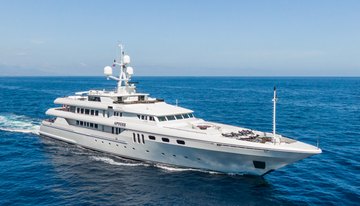 63m | Codecasa from $360,000 p/week 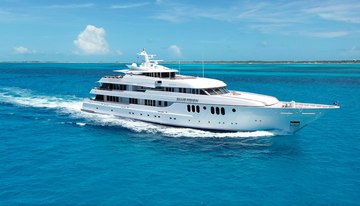 60m | Feadship from $395,000 p/week 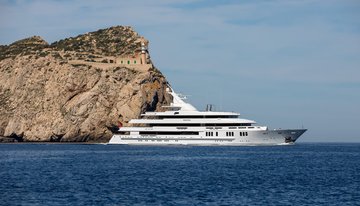 77m | Amels from $645,000 p/week 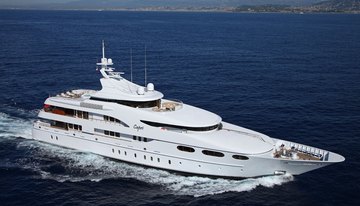 59m | Lurssen from $500,000 p/week ♦︎  57m | Abeking & Rasmussen from $270,000 p/week 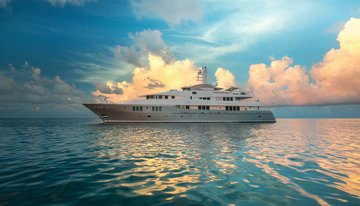 60m | Abeking & Rasmussen from $430,000 p/week 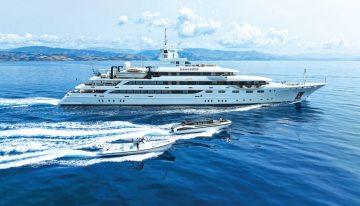 83m | Golden Yachts As Featured In The YachtCharterFleet Difference YachtCharterFleet makes it easy to find the yacht charter vacation that is right for you. We combine thousands of yacht listings with local destination information, sample itineraries and experiences to deliver the world's most comprehensive yacht charter website. San Francisco- Like us on Facebook
- Follow us on Twitter
- Follow us on Instagram
- Find us on LinkedIn
- Add My Yacht
- Affiliates & Partners
Popular Destinations & Events - St Tropez Yacht Charter
- Monaco Yacht Charter
- St Barts Yacht Charter
- Greece Yacht Charter
- Mykonos Yacht Charter
- Caribbean Yacht Charter
Featured Charter Yachts - Maltese Falcon Yacht Charter
- Wheels Yacht Charter
- Victorious Yacht Charter
- Andrea Yacht Charter
- Titania Yacht Charter
- Ahpo Yacht Charter
Receive our latest offers, trends and stories direct to your inbox. Please enter a valid e-mail. Thanks for subscribing. Search for Yachts, Destinations, Events, News... everything related to Luxury Yachts for Charter. Yachts in your shortlist - Places - European, Western and Northern Russia
YEKATERINBURG: FACTORIES, URAL SIGHTS, YELTSIN AND THE WHERE NICHOLAS II WAS KILLEDSverdlovsk oblast. Sverdlovsk Oblast is the largest region in the Urals; it lies in the foothills of mountains and contains a monument indicating the border between Europe and Asia. The region covers 194,800 square kilometers (75,200 square miles), is home to about 4.3 million people and has a population density of 22 people per square kilometer. About 83 percent of the population live in urban areas. Yekaterinburg is the capital and largest city, with 1.5 million people. For Russians, the Ural Mountains are closely associated with Pavel Bazhov's tales and known for folk crafts such as Kasli iron sculpture, Tagil painting, and copper embossing. Yekaterinburg is the birthplace of Russia’s iron and steel industry, taking advantage of the large iron deposits in the Ural mountains. The popular Silver Ring of the Urals tourist route starts here. In the summer you can follow in the tracks of Yermak, climb relatively low Ural mountain peaks and look for boulders seemingly with human faces on them. You can head to the Gemstone Belt of the Ural mountains, which used to house emerald, amethyst and topaz mines. In the winter you can go ice fishing, ski and cross-country ski. Sverdlovsk Oblast and Yekaterinburg are located near the center of Russia, at the crossroads between Europe and Asia and also the southern and northern parts of Russia. Winters are longer and colder than in western section of European Russia. Snowfalls can be heavy. Winter temperatures occasionally drop as low as - 40 degrees C (-40 degrees F) and the first snow usually falls in October. A heavy winter coat, long underwear and good boots are essential. Snow and ice make the sidewalks very slippery, so footwear with a good grip is important. Since the climate is very dry during the winter months, skin moisturizer plus lip balm are recommended. Be alert for mud on street surfaces when snow cover is melting (April-May). Patches of mud create slippery road conditions. YekaterinburgYekaterinburg (kilometer 1818 on the Trans-Siberian Railway) is the fourth largest city in Russia, with of 1.5 million and growth rate of about 12 percent, high for Russia. Located in the southern Ural mountains, it was founded by Peter the Great and named after his wife Catherine, it was used by the tsars as a summer retreat and is where tsar Nicholas II and his family were executed and President Boris Yeltsin lived most of his life and began his political career. The city is near the border between Europe and Asia. Yekaterinburg (also spelled Ekaterinburg) is located on the eastern slope of the Ural Mountains in the headwaters of the Iset and Pyshma Rivers. The Iset runs through the city center. Three ponds — Verkh-Isetsky, Gorodskoy and Nizhne-Isetsky — were created on it. Yekaterinburg has traditionally been a city of mining and was once the center of the mining industry of the Urals and Siberia. Yekaterinburg remains a major center of the Russian armaments industry and is sometimes called the "Pittsburgh of Russia.". A few ornate, pastel mansions and wide boulevards are reminders of the tsarist era. The city is large enough that it has its own Metro system but is characterized mostly by blocky Soviet-era apartment buildings. The city has advanced under President Vladimir Putin and is now one of the fastest growing places in Russia, a country otherwise characterized by population declines Yekaterinburg is technically an Asian city as it lies 32 kilometers east of the continental divide between Europe and Asia. The unofficial capital of the Urals, a key region in the Russian heartland, it is second only to Moscow in terms of industrial production and capital of Sverdlovsk oblast. Among the important industries are ferrous and non-ferrous metallurgy, machine building and metalworking, chemical and petrochemicals, construction materials and medical, light and food industries. On top of being home of numerous heavy industries and mining concerns, Yekaterinburg is also a major center for industrial research and development and power engineering as well as home to numerous institutes of higher education, technical training, and scientific research. In addition, Yekaterinburg is the largest railway junction in Russia: the Trans-Siberian Railway passes through it, the southern, northern, western and eastern routes merge in the city. Accommodation: There are two good and affordable hotels — the 3-star Emerald and Parus hotels — located close to the city's most popular landmarks and main transport interchanges in the center of Yekaterinburg. Room prices start at RUB 1,800 per night. History of YekaterinburgYekaterinburg was founded in 1723 by Peter the Great and named after his wife Catherine I. It was used by the tsars as a summer retreat but was mainly developed as metalworking and manufacturing center to take advantage of the large deposits of iron and other minerals in the Ural mountains. It is best known to Americans as the place where the last Tsar and his family were murdered by the Bolsheviks in 1918 and near where American U-2 spy plane, piloted by Gary Powers, was shot down in 1960. Peter the Great recognized the importance of the iron and copper-rich Urals region for Imperial Russia's industrial and military development. In November 1723, he ordered the construction of a fortress factory and an ironworks in the Iset River Valley, which required a dam for its operation. In its early years Yekaterinburg grew rich from gold and other minerals and later coal. The Yekaterinburg gold rush of 1745 created such a huge amount of wealth that one rich baron of that time hosted a wedding party that lasted a year. By the mid-18th century, metallurgical plants had sprung up across the Urals to cast cannons, swords, guns and other weapons to arm Russia’s expansionist ambitions. The Yekaterinburg mint produced most of Russia's coins. Explorations of the Trans-Baikal and Altai regions began here in the 18th century. Iron, cast iron and copper were the main products. Even though Iron from the region went into the Eiffel Tower, the main plant in Yekaterinburg itself was shut down in 1808. The city still kept going through a mountain factory control system of the Urals. The first railway in the Urals was built here: in 1878, the Yekaterinburg-Perm railway branch connected the province's capital with the factories of the Middle Urals. In the Soviet era the city was called Sverdlovsk (named after Yakov Sverdlov, the man who organized Nicholas II's execution). During the first five-year plans the city became industrial — old plants were reconstructed, new ones were built. The center of Yekaterinburg was formed to conform to the historical general plan of 1829 but was the layout was adjusted around plants and factories. In the Stalin era the city was a major gulag transhipment center. In World War II, many defense-related industries were moved here. It and the surrounding area were a center of the Soviet Union's military industrial complex. Soviet tanks, missiles and aircraft engines were made in the Urals. During the Cold War era, Yekaterinburg was a center of weapons-grade uranium enrichment and processing, warhead assembly and dismantlement. In 1979, 64 people died when anthrax leaked from a biological weapons facility. Yekaterinburg was a “Closed City” for 40 years during the Cold Soviet era and was not open to foreigners until 1991 In the early post-Soviet era, much like Pittsburgh in the 1970s, Yekaterinburg had a hard struggle d to cope with dramatic economic changes that have made its heavy industries uncompetitive on the world market. Huge defense plants struggled to survive and the city was notorious as an organized crime center in the 1990s, when its hometown boy Boris Yeltsin was President of Russia. By the 2000s, Yekaterinburg’s retail and service was taking off, the defense industry was reviving and it was attracting tech industries and investments related to the Urals’ natural resources. By the 2010s it was vying to host a world exhibition in 2020 (it lost, Dubai won) and it had McDonald’s, Subway, sushi restaurants, and Gucci, Chanel and Armani. There were Bentley and Ferrari dealerships but they closed down Transportation in YekaterinburgGetting There: By Plane: Yekaterinburg is a three-hour flight from Moscow with prices starting at RUB 8,000, or a 3-hour flight from Saint Petersburg starting from RUB 9,422 (direct round-trip flight tickets for one adult passenger). There are also flights from Frankfurt, Istanbul, China and major cities in the former Soviet Union. By Train: Yekaterinburg is a major stop on the Trans-Siberian Railway. Daily train service is available to Moscow and many other Russian cities.Yekaterinburg is a 32-hour train ride from Moscow (tickets RUB 8,380 and above) or a 36-hour train ride from Saint Petersburg (RUB 10,300 and above). The ticket prices are round trip for a berth in a sleeper compartment for one adult passenger). By Car: a car trip from Moscow to Yekateringburg is 1,787 kilometers long and takes about 18 hours. The road from Saint Petersburg is 2,294 kilometers and takes about 28 hours. Regional Transport: The region's public transport includes buses and suburban electric trains. Regional trains provide transport to larger cities in the Ural region. Buses depart from Yekaterinburg’s two bus stations: the Southern Bus Station and the Northern Bus Station. Regional Transport: According the to Association for Safe International Road Travel (ASIRT): “Public transportation is well developed. Overcrowding is common. Fares are low. Service is efficient. Buses are the main form of public transport. Tram network is extensive. Fares are reasonable; service is regular. Trams are heavily used by residents, overcrowding is common. Purchase ticket after boarding. Metro runs from city center to Uralmash, an industrial area south of the city. Metro ends near the main railway station. Fares are inexpensive. “Traffic is congested in city center. Getting around by car can be difficult. Route taxis (minivans) provide the fastest transport. They generally run on specific routes, but do not have specific stops. Drivers stop where passengers request. Route taxis can be hailed. Travel by bus or trolleybuses may be slow in rush hour. Trams are less affected by traffic jams. Trolley buses (electric buses) cannot run when temperatures drop below freezing.” Entertainment, Sports and Recreation in YekaterinburgThe performing arts in Yekaterinburg are first rate. The city has an excellent symphony orchestra, opera and ballet theater, and many other performing arts venues. Tickets are inexpensive. The Yekaterinburg Opera and Ballet Theater is lavishly designed and richly decorated building in the city center of Yekaterinburg. The theater was established in 1912 and building was designed by architect Vladimir Semyonov and inspired by the Vienna Opera House and the Theater of Opera and Ballet in Odessa. Vaynera Street is a pedestrian only shopping street in city center with restaurants, cafes and some bars. But otherwise Yekaterinburg's nightlife options are limited. There are a handful of expensive Western-style restaurants and bars, none of them that great. Nightclubs serve the city's nouveau riche clientele. Its casinos have closed down. Some of them had links with organized crime. New dance clubs have sprung up that are popular with Yekaterinburg's more affluent youth. Yekaterinburg's most popular spectator sports are hockey, basketball, and soccer. There are stadiums and arenas that host all three that have fairly cheap tickets. There is an indoor water park and lots of parks and green spaces. The Urals have many lakes, forests and mountains are great for hiking, boating, berry and mushroom hunting, swimming and fishing. Winter sports include cross-country skiing and ice skating. Winter lasts about six months and there’s usually plenty of snow. The nearby Ural Mountains however are not very high and the downhill skiing opportunities are limited.. Sights in YekaterinburgSights in Yekaterinburg include the Museum of City Architecture and Ural Industry, with an old water tower and mineral collection with emeralds. malachite, tourmaline, jasper and other precious stone; Geological Alley, a small park with labeled samples of minerals found in the Urals region; the Ural Geology Museum, which houses an extensive collection of stones, gold and gems from the Urals; a monument marking the border between Europe and Asia; a memorial for gulag victims; and a graveyard with outlandish memorials for slain mafia members. The Military History Museum houses the remains of the U-2 spy plane shot down in 1960 and locally made tanks and rocket launchers. The fine arts museum contains paintings by some of Russia's 19th-century masters. Also worth a look are the History an Local Studies Museum; the Political History and Youth Museum; and the University and Arboretum. Old wooden houses can be seen around Zatoutstovsya ulitsa and ulitsa Belinskogo. Around the city are wooded parks, lakes and quarries used to harvest a variety of minerals. Weiner Street is the main street of Yekaterinburg. Along it are lovely sculptures and 19th century architecture. Take a walk around the unique Literary Quarter Plotinka is a local meeting spot, where you will often find street musicians performing. Plotinka can be described as the center of the city's center. This is where Yekaterinburg holds its biggest events: festivals, seasonal fairs, regional holiday celebrations, carnivals and musical fountain shows. There are many museums and open-air exhibitions on Plotinka. Plotinka is named after an actual dam of the city pond located nearby (“plotinka” means “a small dam” in Russian).In November 1723, Peter the Great ordered the construction of an ironworks in the Iset River Valley, which required a dam for its operation. “Iset” can be translated from Finnish as “abundant with fish”. This name was given to the river by the Mansi — the Finno-Ugric people dwelling on the eastern slope of the Northern Urals. Vysotsky and Iset are skyscrapers that are 188.3 meters and 209 meters high, respectively. Fifty-story-high Iset has been described by locals as the world’s northernmost skyscraper. Before the construction of Iset, Vysotsky was the tallest building of Yekaterinburg and Russia (excluding Moscow). A popular vote has decided to name the skyscraper after the famous Soviet songwriter, singer and actor Vladimir Vysotsky. and the building was opened on November 25, 2011. There is a lookout at the top of the building, and the Vysotsky museum on its second floor. The annual “Vysotsky climb” (1137 steps) is held there, with a prize of RUB 100,000. While Vysotsky serves as an office building, Iset, owned by the Ural Mining and Metallurgical Company, houses 225 premium residential apartments ranging from 80 to 490 square meters in size. Boris Yeltsin Presidential CenterThe Boris Yeltsin Presidential Center (in the city center: ul. Yeltsina, 3) is a non-governmental organization named after the first president of the Russian Federation. The Museum of the First President of Russia as well as his archives are located in the Center. There is also a library, educational and children's centers, and exposition halls. Yeltsin lived most of his life and began his political career in Yekaterinburg. He was born in Butka about 200 kilometers east of Yekaterinburg. The core of the Center is the Museum. Modern multimedia technologies help animate the documents, photos from the archives, and artifacts. The Yeltsin Museum holds collections of: propaganda posters, leaflets, and photos of the first years of the Soviet regime; portraits and portrait sculptures of members of Politburo of the Central Committee of the Communist Party of various years; U.S.S.R. government bonds and other items of the Soviet era; a copy of “One Day in the Life of Ivan Denisovich” by Alexander Solzhenitsyn, published in the “Novy Mir” magazine (#11, 1962); perestroika-era editions of books by Alexander Solzhenitsyn, Vasily Grossman, and other authors; theater, concert, and cinema posters, programs, and tickets — in short, all of the artifacts of the perestroika era. The Yeltsin Center opened in 2012. Inside you will also find an art gallery, a bookstore, a gift shop, a food court, concert stages and a theater. There are regular screenings of unique films that you will not find anywhere else. Also operating inside the center, is a scientific exploritorium for children. The center was designed by Boris Bernaskoni. Almost from the its very opening, the Yeltsin Center has been accused by members of different political entities of various ideological crimes. The museum is open Tuesday to Sunday, from 10:00am to 9:00pm. Where Nicholas II was ExecutedOn July, 17, 1918, during this reign of terror of the Russian Civil War, former-tsar Nicholas II, his wife, five children (the 13-year-old Alexis, 22-year-old Olga, 19-year-old Maria and 17-year-old Anastasia)the family physician, the cook, maid, and valet were shot to death by a Red Army firing squad in the cellar of the house they were staying at in Yekaterinburg. Ipatiev House (near Church on the Blood, Ulitsa Libknekhta) was a merchant's house where Nicholas II and his family were executed. The house was demolished in 1977, on the orders of an up and coming communist politician named Boris Yeltsin. Yeltsin later said that the destruction of the house was an "act of barbarism" and he had no choice because he had been ordered to do it by the Politburo, The site is marked with s cross with the photos of the family members and cross bearing their names. A small wooden church was built at the site. It contains paintings of the family. For a while there were seven traditional wooden churches. Mass is given ay noon everyday in an open-air museum. The Church on the Blood — constructed to honor Nicholas II and his family — was built on the part of the site in 1991 and is now a major place of pilgrimage. Nicholas and his family where killed during the Russian civil war. It is thought the Bolsheviks figured that Nicholas and his family gave the Whites figureheads to rally around and they were better of dead. Even though the death orders were signed Yakov Sverdlov, the assassination was personally ordered by Lenin, who wanted to get them out of sight and out of mind. Trotsky suggested a trial. Lenin nixed the idea, deciding something had to be done about the Romanovs before White troops approached Yekaterinburg. Trotsky later wrote: "The decision was not only expedient but necessary. The severity of he punishment showed everyone that we would continue to fight on mercilessly, stopping at nothing." Ian Frazier wrote in The New Yorker: “Having read a lot about the end of Tsar Nicholas II and his family and servants, I wanted to see the place in Yekaterinburg where that event occurred. The gloomy quality of this quest depressed Sergei’s spirits, but he drove all over Yekaterinburg searching for the site nonetheless. Whenever he stopped and asked a pedestrian how to get to the house where Nicholas II was murdered, the reaction was a wince. Several people simply walked away. But eventually, after a lot of asking, Sergei found the location. It was on a low ridge near the edge of town, above railroad tracks and the Iset River. The house, known as the Ipatiev House, was no longer standing, and the basement where the actual killings happened had been filled in. I found the blankness of the place sinister and dizzying. It reminded me of an erasure done so determinedly that it had worn a hole through the page. [Source: Ian Frazier, The New Yorker, August 3, 2009, Frazier is author of “Travels in Siberia” (2010)] “The street next to the site is called Karl Liebknecht Street. A building near where the house used to be had a large green advertisement that said, in English, “LG—Digitally Yours.” On an adjoining lot, a small chapel kept the memory of the Tsar and his family; beneath a pedestal holding an Orthodox cross, peonies and pansies grew. The inscription on the pedestal read, “We go down on our knees, Russia, at the foot of the tsarist cross.” Books: The Romanovs: The Final Chapter by Robert K. Massie (Random House, 1995); The Fall of the Romanovs by Mark D. Steinberg and Vladimir Khrustalëv (Yale, 1995); See Separate Article END OF NICHOLAS II factsanddetails.com Execution of Nicholas IIAccording to Robert Massie K. Massie, author of Nicholas and Alexandra, Nicholas II and his family were awakened from their bedrooms around midnight and taken to the basement. They were told they were to going to take some photographs of them and were told to stand behind a row of chairs. Suddenly, a group of 11 Russians and Latvians, each with a revolver, burst into the room with orders to kill a specific person. Yakob Yurovsky, a member of the Soviet executive committee, reportedly shouted "your relatives are continuing to attack the Soviet Union.” After firing, bullets bouncing off gemstones hidden in the corsets of Alexandra and her daughters ricocheted around the room like "a shower of hail," the soldiers said. Those that were still breathing were killed with point black shots to the head. The three sisters and the maid survived the first round thanks to their gems. They were pressed up against a wall and killed with a second round of bullets. The maid was the only one that survived. She was pursued by the executioners who stabbed her more than 30 times with their bayonets. The still writhing body of Alexis was made still by a kick to the head and two bullets in the ear delivered by Yurovsky himself. Yurovsky wrote: "When the party entered I told the Romanovs that in view of the fact their relatives continued their offensive against Soviet Russia, the Executive Committee of the Urals Soviet had decided to shoot them. Nicholas turned his back to the detachment and faced his family. Then, as if collecting himself, he turned around, asking, 'What? What?'" "[I] ordered the detachment to prepare. Its members had been previously instructed whom to shoot and to am directly at the heart to avoid much blood and to end more quickly. Nicholas said no more. he turned again to his family. The others shouted some incoherent exclamations. All this lasted a few seconds. Then commenced the shooting, which went on for two or three minutes. [I] killed Nicholas on the spot." Nicholas II’s Initial Burial Site in YekaterinburgGanina Yama Monastery (near the village of Koptyaki, 15 kilometers northwest of Yekaterinburg) stands near the three-meter-deep pit where some the remains of Nicholas II and his family were initially buried. The second burial site — where most of the remains were — is in a field known as Porosyonkov (56.9113628°N 60.4954326°E), seven kilometers from Ganina Yama. On visiting Ganina Yama Monastery, one person posted in Trip Advisor: “We visited this set of churches in a pretty park with Konstantin from Ekaterinburg Guide Centre. He really brought it to life with his extensive knowledge of the history of the events surrounding their terrible end. The story is so moving so unless you speak Russian, it is best to come here with a guide or else you will have no idea of what is what.” In 1991, the acid-burned remains of Nicholas II and his family were exhumed from a shallow roadside mass grave in a swampy area 12 miles northwest of Yekaterinburg. The remains had been found in 1979 by geologist and amateur archeologist Alexander Avdonin, who kept the location secret out of fear that they would be destroyed by Soviet authorities. The location was disclosed to a magazine by one his fellow discovers. The original plan was to throw the Romanovs down a mine shaft and disposes of their remains with acid. They were thrown in a mine with some grenades but the mine didn't collapse. They were then carried by horse cart. The vats of acid fell off and broke. When the carriage carrying the bodies broke down it was decided the bury the bodies then and there. The remaining acid was poured on the bones, but most of it was soaked up the ground and the bones largely survived. After this their pulses were then checked, their faces were crushed to make them unrecognizable and the bodies were wrapped in bed sheets loaded onto a truck. The "whole procedure," Yurovsky said took 20 minutes. One soldiers later bragged than he could "die in peace because he had squeezed the Empress's -------." The bodies were taken to a forest and stripped, burned with acid and gasoline, and thrown into abandoned mine shafts and buried under railroad ties near a country road near the village of Koptyaki. "The bodies were put in the hole," Yurovsky wrote, "and the faces and all the bodies, generally doused with sulfuric acid, both so they couldn't be recognized and prevent a stink from them rotting...We scattered it with branches and lime, put boards on top and drove over it several times—no traces of the hole remained. Shortly afterwards, the government in Moscow announced that Nicholas II had been shot because of "a counterrevolutionary conspiracy." There was no immediate word on the other members of the family which gave rise to rumors that other members of the family had escaped. Yekaterinburg was renamed Sverdlov in honor of the man who signed the death orders. For seven years the remains of Nicholas II, Alexandra, three of their daughters and four servants were stored in polyethylene bags on shelves in the old criminal morgue in Yekaterunburg. On July 17, 1998, Nicholas II and his family and servants who were murdered with him were buried Peter and Paul Fortress in St. Petersburg along with the other Romanov tsars, who have been buried there starting with Peter the Great. Nicholas II had a side chapel built for himself at the fortress in 1913 but was buried in a new crypt. Near YekaterinburgFactory-Museum of Iron and Steel Metallurgy (in Niznhy Tagil 80 kilometers north of Yekaterinburg) a museum with old mining equipment made at the site of huge abandoned iron and steel factory. Officially known as the Factory-Museum of the History of the Development of Iron and Steel Metallurgy, it covers an area of 30 hectares and contains a factory founded by the Demidov family in 1725 that specialized mainly in the production of high-quality cast iron and steel. Later, the foundry was renamed after Valerian Kuybyshev, a prominent figure of the Communist Party. The first Russian factory museum, the unusual museum demonstrates all stages of metallurgy and metal working. There is even a blast furnace and an open-hearth furnace. The display of factory equipment includes bridge crane from 1892) and rolling stock equipment from the 19th-20th centuries. In Niznhy Tagil contains some huge blocks of malachite and Nizhnyaya Sinyachikha (180 kilometers east-northeast of Yekaterinburg) has an open air architecture museum with log buildings, a stone church and other pre-revolutionary architecture. The village is the creation of Ivan Samoilov, a local activist who loved his village so much he dedicated 40 years of his life to recreating it as the open-air museum of wooden architecture. The stone Savior Church, a good example of Siberian baroque architecture. The interior and exterior of the church are exhibition spaces of design. The houses are very colorful. In tsarist times, rich villagers hired serfs to paint the walls of their wooden izbas (houses) bright colors. Old neglected buildings from the 17th to 19th centuries have been brought to Nizhnyaya Sinyachikha from all over the Urals. You will see the interior design of the houses and hear stories about traditions and customs of the Ural farmers. Verkhoturye (330 kilometers road from Yekaterinburg) is the home a 400-year-old monastery that served as 16th century capital of the Urals. Verkhoturye is a small town on the Tura River knows as the Jerusalem of the Urals for its many holy places, churches and monasteries. The town's main landmark is its Kremlin — the smallest in Russia. Pilgrims visit the St. Nicholas Monastery to see the remains of St. Simeon of Verkhoturye, the patron saint of fishermen. Ural MountainsUral Mountains are the traditional dividing line between Europe and Asia and have been a crossroads of Russian history. Stretching from Kazakhstan to the fringes of the Arctic Kara Sea, the Urals lie almost exactly along the 60 degree meridian of longitude and extend for about 2,000 kilometers (1,300 miles) from north to south and varies in width from about 50 kilometers (30 miles) in the north and 160 kilometers (100 miles) the south. At kilometers 1777 on the Trans-Siberian Railway there is white obelisk with "Europe" carved in Russian on one side and "Asia" carved on the other. The eastern side of the Urals contains a lot of granite and igneous rock. The western side is primarily sandstone and limestones. A number of precious stones can be found in the southern part of the Urals, including emeralds. malachite, tourmaline, jasper and aquamarines. The highest peaks are in the north. Mount Narodnaya is the highest of all but is only 1884 meters (6,184 feet) high. The northern Urals are covered in thick forests and home to relatively few people. Like the Appalachian Mountains in the eastern United States, the Urals are very old mountains — with rocks and sediments that are hundreds of millions years old — that were one much taller than they are now and have been steadily eroded down over millions of years by weather and other natural processes to their current size. According to Encyclopedia Britannica: “The rock composition helps shape the topography: the high ranges and low, broad-topped ridges consist of quartzites, schists, and gabbro, all weather-resistant. Buttes are frequent, and there are north–south troughs of limestone, nearly all containing river valleys. Karst topography is highly developed on the western slopes of the Urals, with many caves, basins, and underground streams. The eastern slopes, on the other hand, have fewer karst formations; instead, rocky outliers rise above the flattened surfaces. Broad foothills, reduced to peneplain, adjoin the Central and Southern Urals on the east. “The Urals date from the structural upheavals of the Hercynian orogeny (about 250 million years ago). About 280 million years ago there arose a high mountainous region, which was eroded to a peneplain. Alpine folding resulted in new mountains, the most marked upheaval being that of the Nether-Polar Urals...The western slope of the Urals is composed of middle Paleozoic sedimentary rocks (sandstones and limestones) that are about 350 million years old. In many places it descends in terraces to the Cis-Ural depression (west of the Urals), to which much of the eroded matter was carried during the late Paleozoic (about 300 million years ago). Found there are widespread karst (a starkly eroded limestone region) and gypsum, with large caverns and subterranean streams. On the eastern slope, volcanic layers alternate with sedimentary strata, all dating from middle Paleozoic times.” Southern UralsThe southern Urals are characterized by grassy slopes and fertile valleys. The middle Urals are a rolling platform that barely rises above 300 meters (1,000 feet). This region is rich in minerals and has been heavily industrialized. This is where you can find Yekaterinburg (formally Sverdlovsk), the largest city in the Urals. Most of the Southern Urals are is covered with forests, with 50 percent of that pine-woods, 44 percent birch woods, and the rest are deciduous aspen and alder forests. In the north, typical taiga forests are the norm. There are patches of herbal-poaceous steppes, northem sphagnous marshes and bushy steppes, light birch forests and shady riparian forests, tall-grass mountainous meadows, lowland ling marshes and stony placers with lichen stains. In some places there are no large areas of homogeneous forests, rather they are forests with numerous glades and meadows of different size. In the Ilmensky Mountains Reserve in the Southern Urals, scientists counted 927 vascular plants (50 relicts, 23 endemic species), about 140 moss species, 483 algae species and 566 mushroom species. Among the species included into the Red Book of Russia are feather grass, downy-leaved feather grass, Zalessky feather grass, moccasin flower, ladies'-slipper, neottianthe cucullata, Baltic orchis, fen orchis, helmeted orchis, dark-winged orchis, Gelma sandwart, Krasheninnikov sandwart, Clare astragalus. The fauna of the vertebrate animals in the Reserve includes 19 fish, 5 amphibian and 5 reptile. Among the 48 mammal species are elks, roe deer, boars, foxes, wolves, lynxes, badgers, common weasels, least weasels, forest ferrets, Siberian striped weasel, common marten, American mink. Squirrels, beavers, muskrats, hares, dibblers, moles, hedgehogs, voles are quite common, as well as chiropterans: pond bat, water bat, Brandt's bat, whiskered bat, northern bat, long-eared bat, parti-coloured bat, Nathusius' pipistrelle. The 174 bird bird species include white-tailed eagles, honey hawks, boreal owls, gnome owls, hawk owls, tawny owls, common scoters, cuckoos, wookcocks, common grouses, wood grouses, hazel grouses, common partridges, shrikes, goldenmountain thrushes, black- throated loons and others. Activities and Places in the Ural MountainsThe Urals possess beautiful natural scenery that can be accessed from Yekaterinburg with a rent-a-car, hired taxi and tour. Travel agencies arrange rafting, kayaking and hiking trips. Hikes are available in the taiga forest and the Urals. Trips often include walks through the taiga to small lakes and hikes into the mountains and excursions to collect mushrooms and berries and climb in underground caves. Mellow rafting is offered in a relatively calm six kilometer section of the River Serga. In the winter visitor can enjoy cross-mountains skiing, downhill skiing, ice fishing, dog sledding, snow-shoeing and winter hiking through the forest to a cave covered with ice crystals. Lake Shartash (10 kilometers from Yekaterinburg) is where the first Ural gold was found, setting in motion the Yekaterinburg gold rush of 1745, which created so much wealth one rich baron of that time hosted a wedding party that lasted a year. The area around Shartash Lake is a favorite picnic and barbecue spot of the locals. Getting There: by bus route No. 50, 054 or 54, with a transfer to suburban commuter bus route No. 112, 120 or 121 (the whole trip takes about an hour), or by car (10 kilometers drive from the city center, 40 minutes). Revun Rapids (90 kilometers road from Yekaterinburg near Beklenishcheva village) is a popular white water rafting places On the nearby cliffs you can see the remains of a mysterious petroglyph from the Paleolithic period. Along the steep banks, you may notice the dark entrance of Smolinskaya Cave. There are legends of a sorceress who lived in there. The rocks at the riverside are suited for competitive rock climbers and beginners. Climbing hooks and rings are hammered into rocks. The most fun rafting is generally in May and June. Olenii Ruchii National Park (100 kilometers west of Yekaterinburg) is the most popular nature park in Sverdlovsk Oblast and popular weekend getaway for Yekaterinburg residents. Visitors are attracted by the beautiful forests, the crystal clear Serga River and picturesque rocks caves. There are some easy hiking routes: the six-kilometer Lesser Ring and the 15-kilometer Greater Ring. Another route extends for 18 km and passes by the Mitkinsky Mine, which operated in the 18th-19th centuries. It's a kind of an open-air museum — you can still view mining an enrichment equipment here. There is also a genuine beaver dam nearby. Among the other attractions at Olenii Ruchii are Druzhba (Friendship) Cave, with passages that extend for about 500 meters; Dyrovaty Kamen (Holed Stone), created over time by water of Serga River eroding rock; and Utoplennik (Drowned Man), where you can see “The Angel of Sole Hope”., created by the Swedish artist Lehna Edwall, who has placed seven angels figures in different parts of the world to “embrace the planet, protecting it from fear, despair, and disasters.” Image Sources: Wikimedia Commons Text Sources: Federal Agency for Tourism of the Russian Federation (official Russia tourism website russiatourism.ru ), Russian government websites, UNESCO, Wikipedia, Lonely Planet guides, New York Times, Washington Post, Los Angeles Times, National Geographic, The New Yorker, Bloomberg, Reuters, Associated Press, AFP, Yomiuri Shimbun and various books and other publications. Updated in September 2020 - Facebook
- Twitter
- Google+
- e-mail
Page Top This site contains copyrighted material the use of which has not always been authorized by the copyright owner. Such material is made available in an effort to advance understanding of country or topic discussed in the article. This constitutes 'fair use' of any such copyrighted material as provided for in section 107 of the US Copyright Law. In accordance with Title 17 U.S.C. Section 107, the material on this site is distributed without profit. If you wish to use copyrighted material from this site for purposes of your own that go beyond 'fair use', you must obtain permission from the copyright owner. If you are the copyright owner and would like this content removed from factsanddetails.com, please contact me.  |


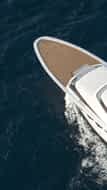

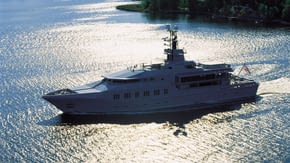

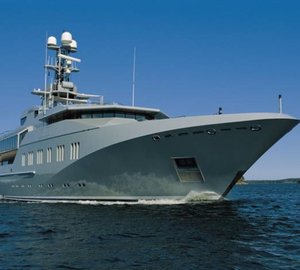
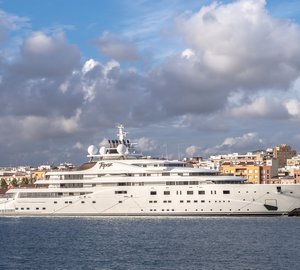
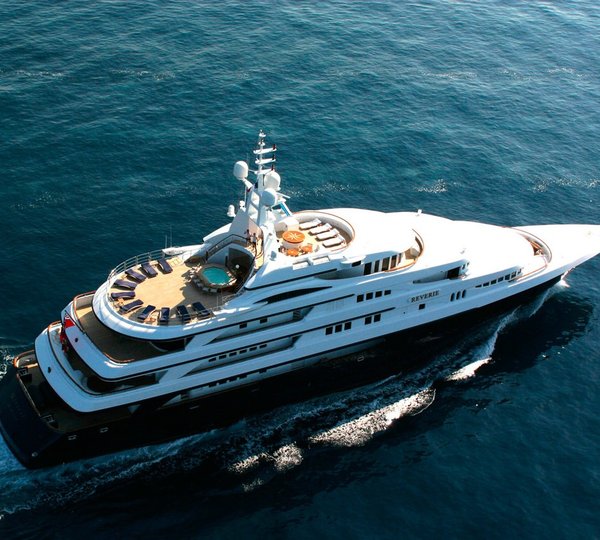
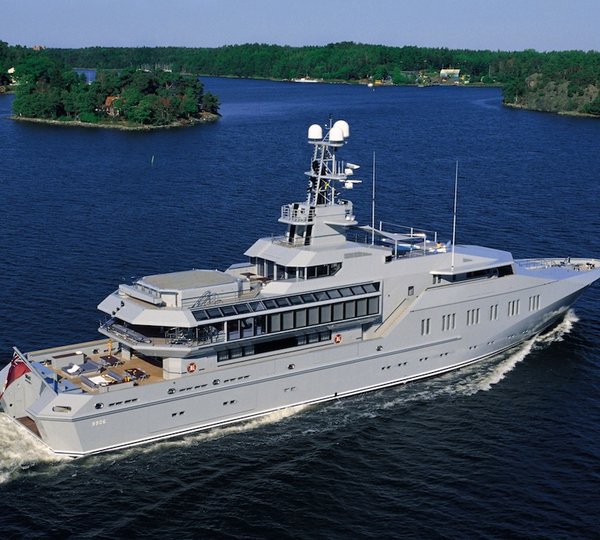
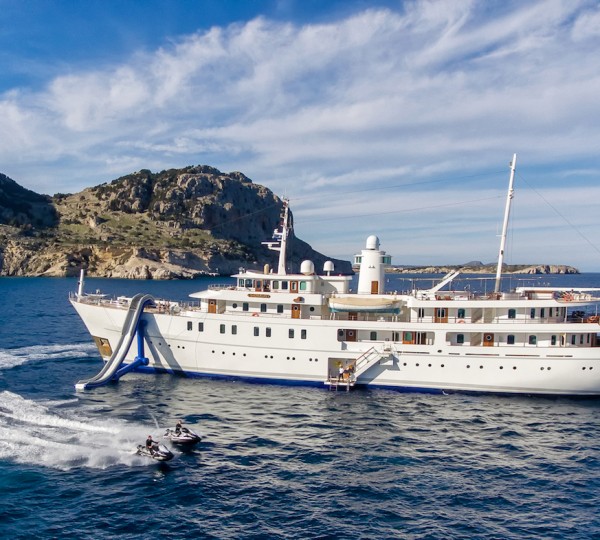
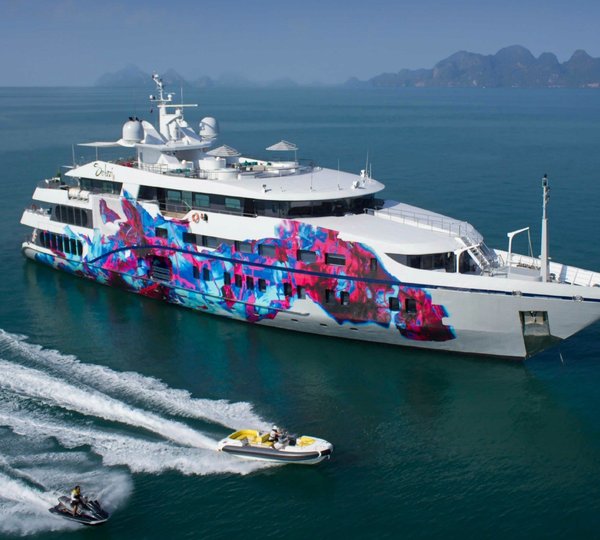


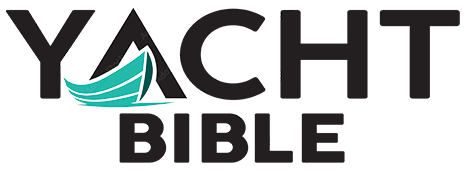
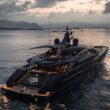
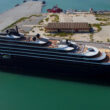
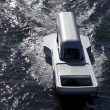
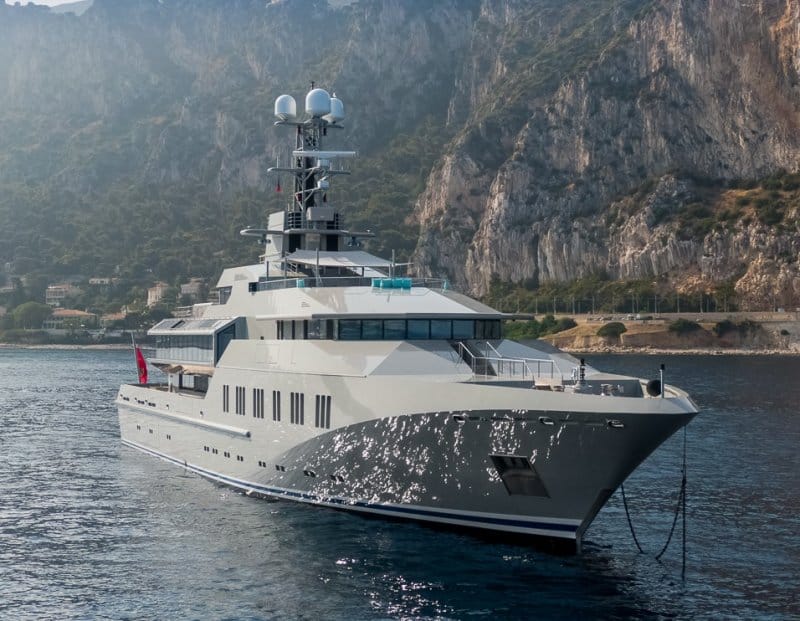
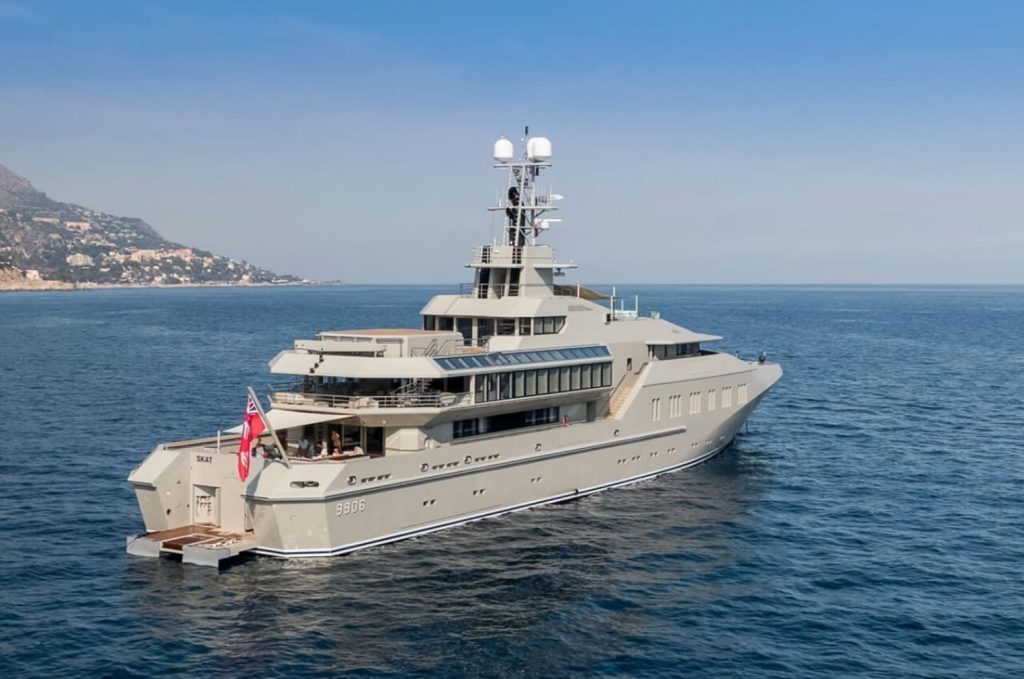

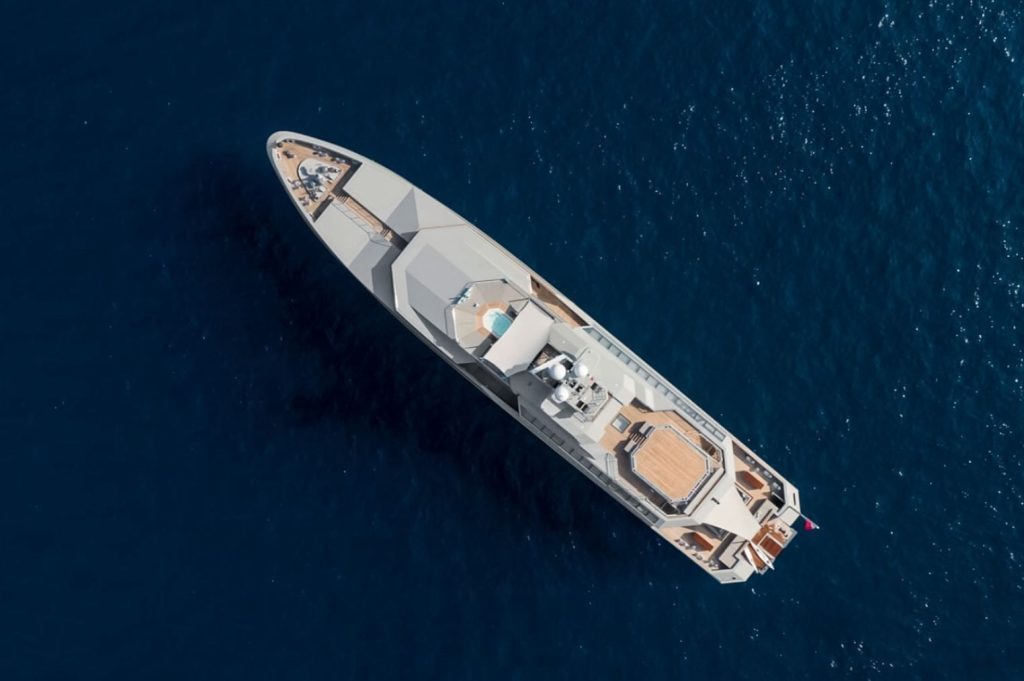

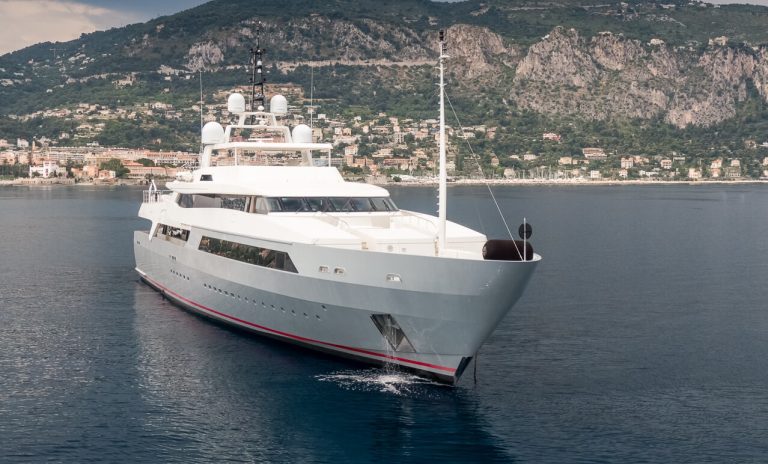
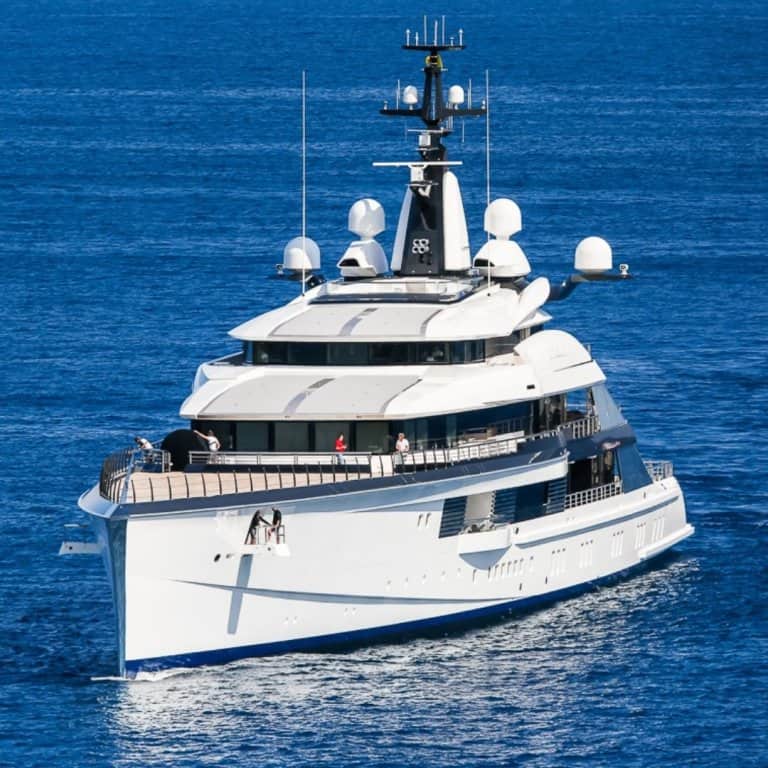
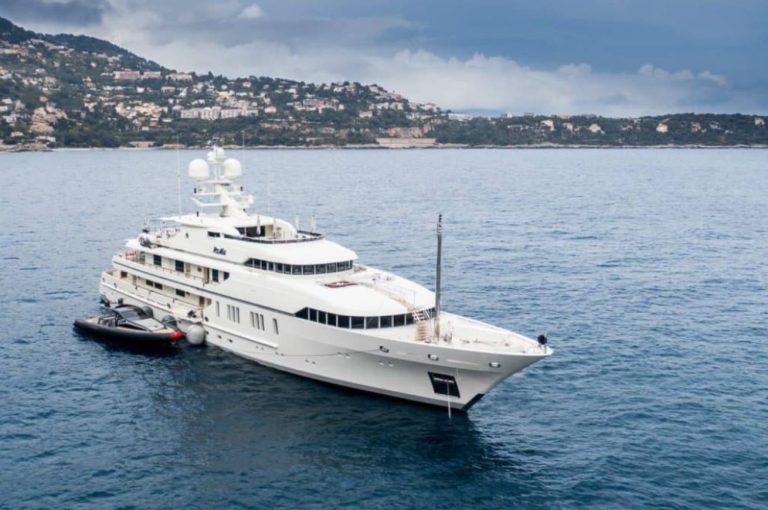
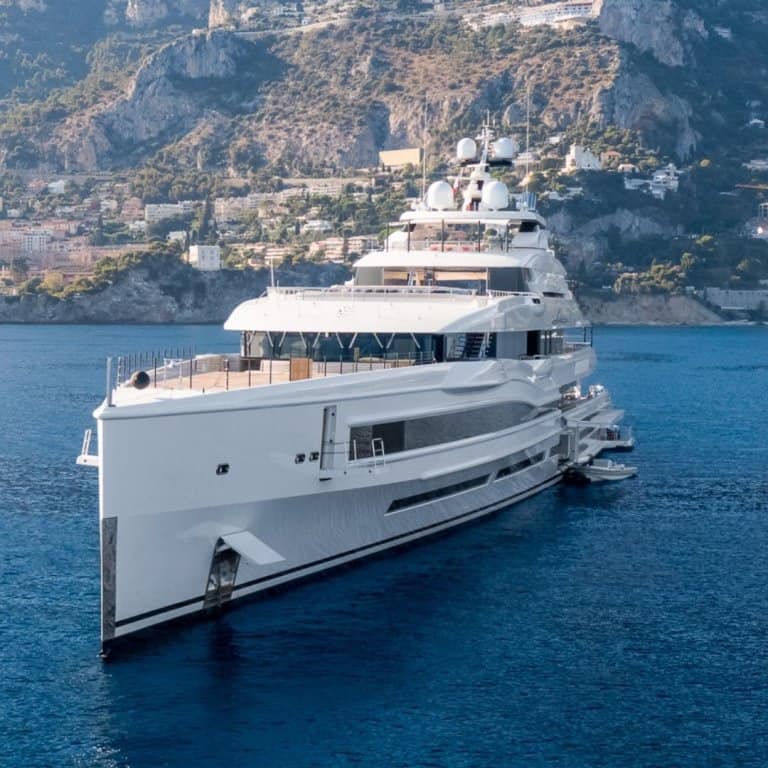







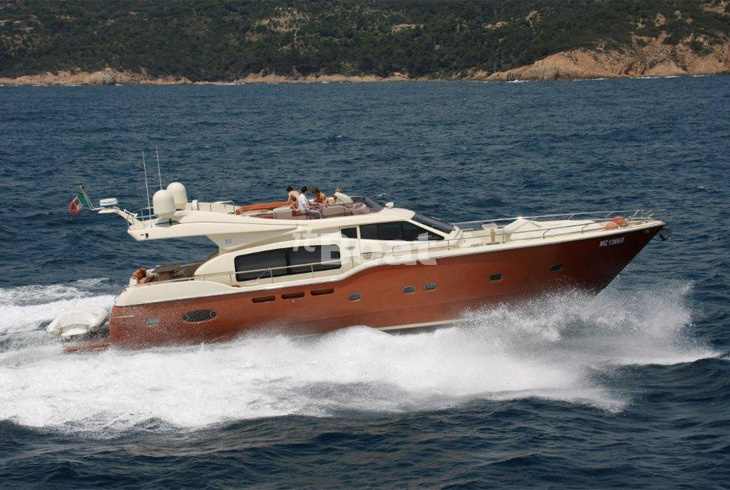













IMAGES
VIDEO
COMMENTS
SKAT is a 71m/233' yacht with Espen Oeino design and Marco Zanini interior, built by Lürssen in 2002. She offers exceptional exterior and interior spaces, a helicopter landing pad, a beach club, and a range of 4,600 nm.
Skat in Pitons Bay, St Lucia, 21 April 2011 Skat in Pitons Bay, St Lucia, 21 April 2011. Skat is a luxury yacht built by Lürssen of Bremen, Germany as project 9906, a number prominently displayed on the hull in a typeface matching that of military vessels. The project started in November 1999 and the yacht launched in 2002. The owner was Charles Simonyi, a former Software Engineer from ...
Special Features: The award winning 70.7m/231'11" motor yacht 'Skat' was built by Lurssen in Germany at their Bremen shipyard. Her interior is styled by design house Marco Zanini and she was completed in 2002. This luxury vessel's exterior design is the work of Espen Oeino and she was last refitted in 2022.
Skat is a futuristic and distinctive yacht designed by Espen Øino for a visionary owner who wanted a boat "pas tout à fait comme les autres". Learn about her history, features, refit and sale in this editorial feature by Boat International.
SKAT is a 71-meter luxury yacht built by Lurssen in 2002 for Charles Simonyi, a Microsoft engineer and entrepreneur. The yacht has a minimalist interior by Marco Zanini, original artworks by Lichtenstein and Vasarely, and is now owned by Kjell Inge Rokke.
About SKAT, brought to you by BOATPro. SKAT is a 70.7 m Motor Yacht, built in Germany by Lurssen and delivered in 2002. Her top speed is 18.1 kn and she boasts a maximum range of 4600.0 nm when navigating at cruising speed, with power coming from two MTU diesel engines. She can accommodate up to 10 guests in 5 staterooms, with 20 crew members.
Skat is a 70.70m (231.96ft) motor yacht, custom built in 2002 by Lurssen Yachts. The yacht's interior has been designed by Marco Zanini. She was last refitted in 2005. Skat has a steel hull and aluminium superstructure with a beam of 13.50m (44.29ft) and a 3.75m (12.30ft) draft. This custom displacement yacht is equipped with an ultra-modern ...
The motor yacht SKAT is a 71 metre 232 (foot) volumous steel vessel which was made at Lurssen Yachts and designed in the office of Lurssen and Espen Oeino. The naval architect that made the drawings in respect of the yacht was Lurssen and Espen Oeino. Also, the interior designing is sucessful creation of Marco Zanini / Flavia Alves De Sousa.
Skat is a motor yacht with an overall length of m. The yacht's builder is Lürssen Yachts from Germany, who launched Skat in 2002. The superyacht has a beam of m, a draught of m and a volume of . GT.. Skat features exterior design by Espen Øino International and interior design by Marco Zanini. Up to 12 guests can be accommodated on board the superyacht, Skat, and she also has accommodation ...
Skat is a second home with iconic design by Espen Øino and Marco Zanini. It features a glass conservatory, low noise and vibration levels, and spacious crew spaces.
Lurssen Skat Overview. 5. cabin. 20. crew. This Espen Oeino-designed yacht caused a lot of criticism when it was first launched in 2002. The angular shapes and glazed openings on the upper deck gave her the resemblance of a warship. She can offer guests a high and refined comfort, and can reach 17 knots, thanks to two 2,717 horsepower MTU engines.
Motor yacht SKAT Is an impressive 70,70-metre luxury superyacht built by the well-known and respected German shipyard Lurssen and launched in 2002. Superyacht SKAT was constructed under the Project name 9906 based on the design by Espen Oeino International with interiors by the Italian designer Marco Zanini.
Motor Yacht Skat Skat is a 70.70m (231.96ft) motor yacht, custom built in 2002 by Lurssen Yachts. The yacht's interior has been designed by Marco Zanini. She was last refitted in 2005. Skat has a steel hull and aluminium superstructure with a beam of 13.50m (44.29ft) and a 3.75m (12.30ft) draft. This custom displacement yacht is equipped with ...
SKAT is a 71-meter yacht built by Lurssen in 2002 for Charles Simonyi, a Hungarian-born billionaire who worked at Microsoft. The yacht has a minimalist interior design by Marco Zanini and Espen Øino, and features a helipad, a Jacuzzi, a gym, and a beach club.
Skat is a 70.7 m / 232′0″ luxury motor yacht. She was built by Lurssen in 2002. With a beam of 13.5 m and a draft of 3.75 m, she has a steel hull and aluminium superstructure. This adds up to a gross tonnage of 1998 tons. She is powered by engines of 2680 hp each giving her a maximum speed of 17 knots and a cruising speed of 15 knots. Skat's maximum range is estimated at 4600 nautical ...
Fraser is delighted to announce the in-house sale of the iconic 71M/233' Lurssen SKAT. Launched in 2002, SKAT is renowned for her very distinctive, military exterior, drawn by Espen Oeino. Her grey hull and superstructure perfectly complement her construction materials: steel, aluminum and glass.
The iconic 70.71 metre Lürssen motor Skat has been sold with both buyer and seller represented by Stuart Larsen at Fraser.. Built in steel and aluminium by German yard Lurssen to a design by Espen Oeino, she was delivered in 2002 and immediately attracted worldwide attention with her military-style profile, finished in grey.An interior by Marco Zanini accommodates up to 12 guests in seven en ...
Currently on the market as a yacht for sale, we take a look inside the iconic Lürssen yacht Skat and speak to her famed designer. Fleet Updates Inside Skat: A yachting treasure revisited. Written by Charl van Rooy. Mon, 31 Aug 2020 | 13:00.
ASIA PACIFIC; Ferretti Altura 690: a return to the values of a winning philosophy. Saturday, January 15, 2005. DISCOVER MORE. Thursday, April 14, 2005. Ferretti Yachts awarded at
Ekaterinburg of Sverdlovsk Oblast is considered to be the third capital of Russia due to such factors as geographical position, developed economics and industry. Ekaterinburg of Russia is the most important city of the Urals. It is an administrative, transport, commercial, trading, scientific and cultural centre.
Award winning. The award winning 70.7m/231'11" motor yacht 'Skat' was built by Lurssen in Germany at their Bremen shipyard. Her interior is styled by design house Marco Zanini and she was completed in 2002. This luxury vessel's exterior design is the work of Espen Oeino and she was last refitted in 2022.
5. Chertovo Gorodische. 112. Points of Interest & Landmarks. By saronic. The about 100m long and 20m high rock wall is impressive. It is a phenomenon, which can be found also in other places... 6. Vaynera Street, Yekaterinburg.
SVERDLOVSK OBLAST. Sverdlovsk Oblast is the largest region in the Urals; it lies in the foothills of mountains and contains a monument indicating the border between Europe and Asia.